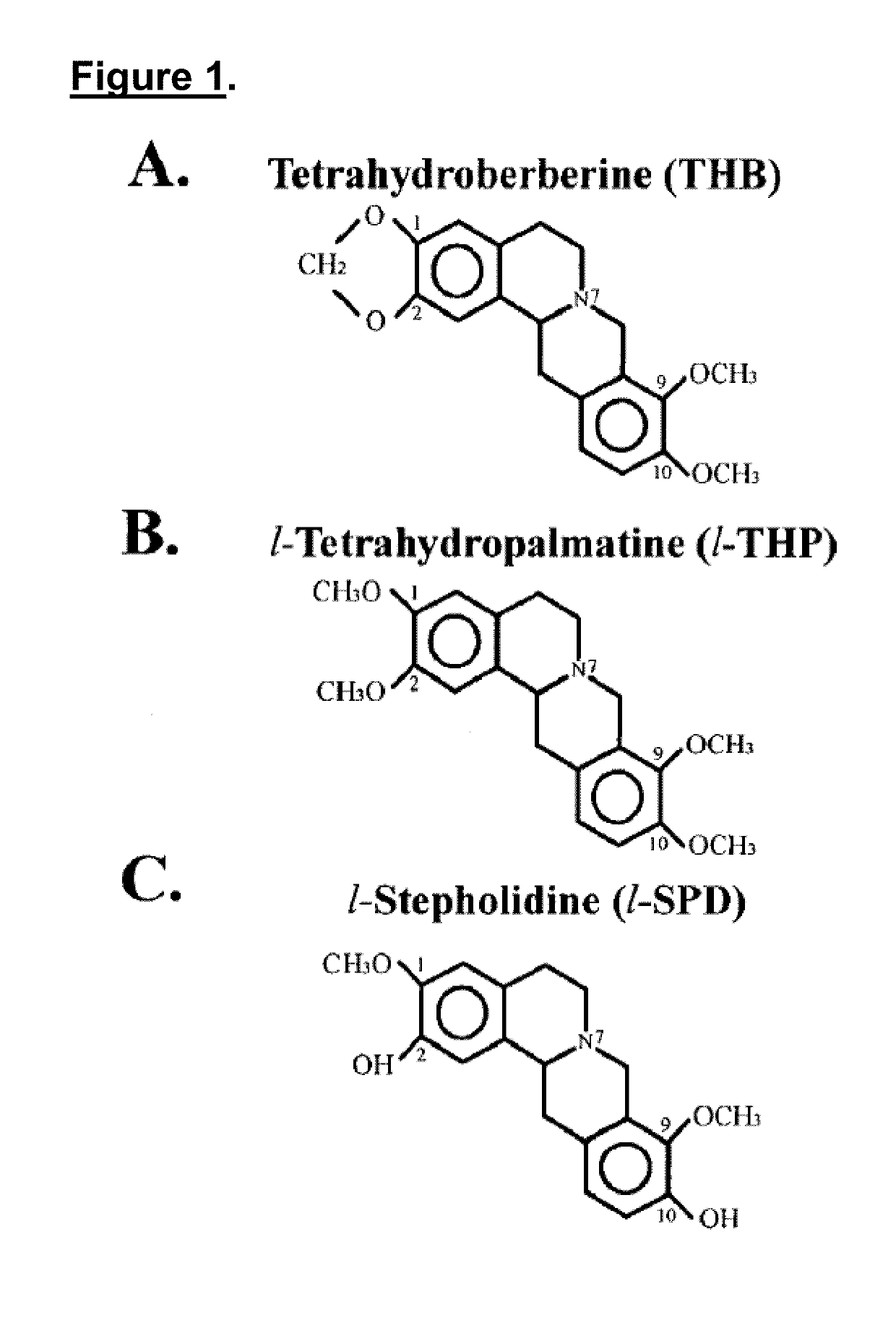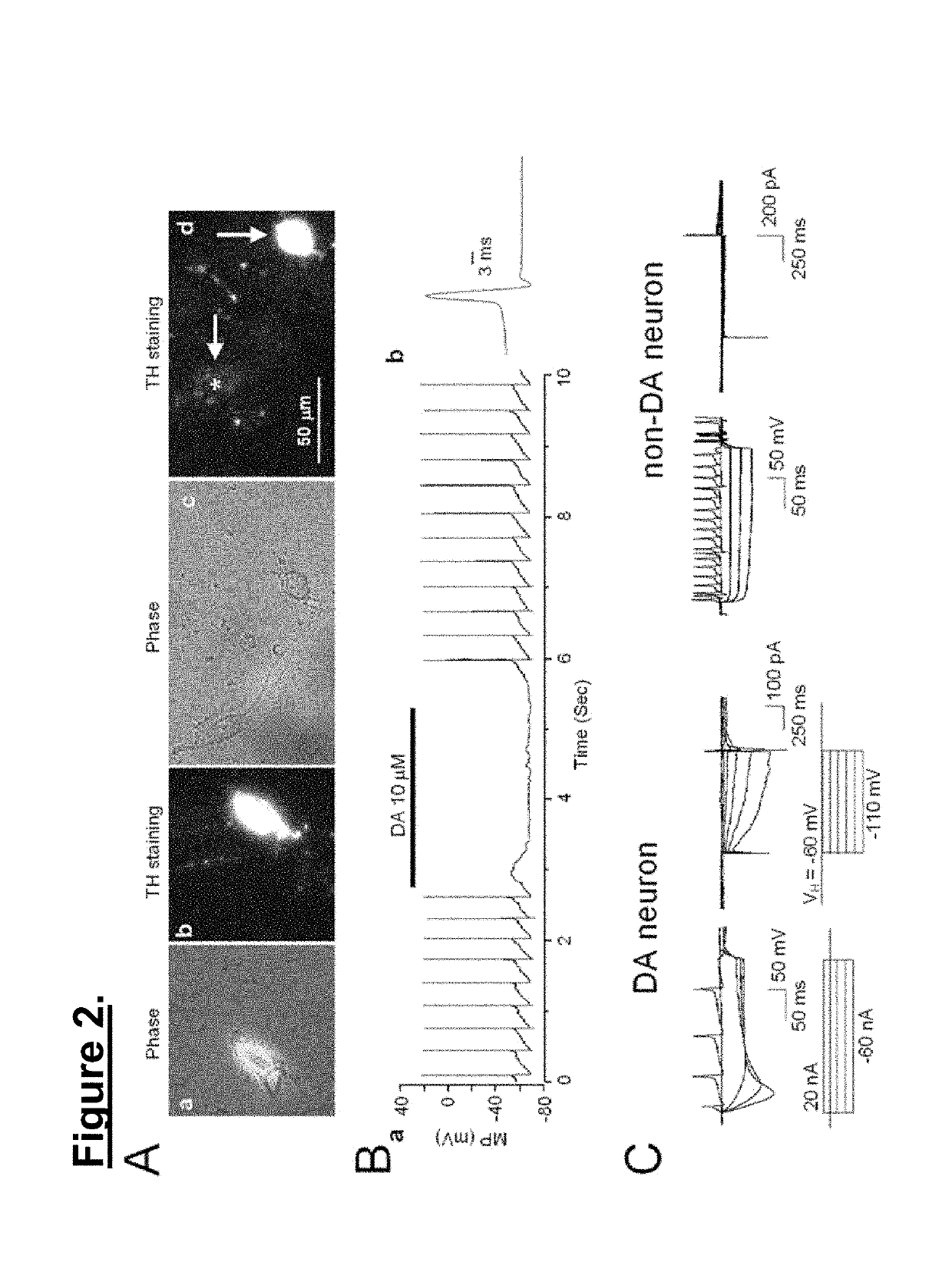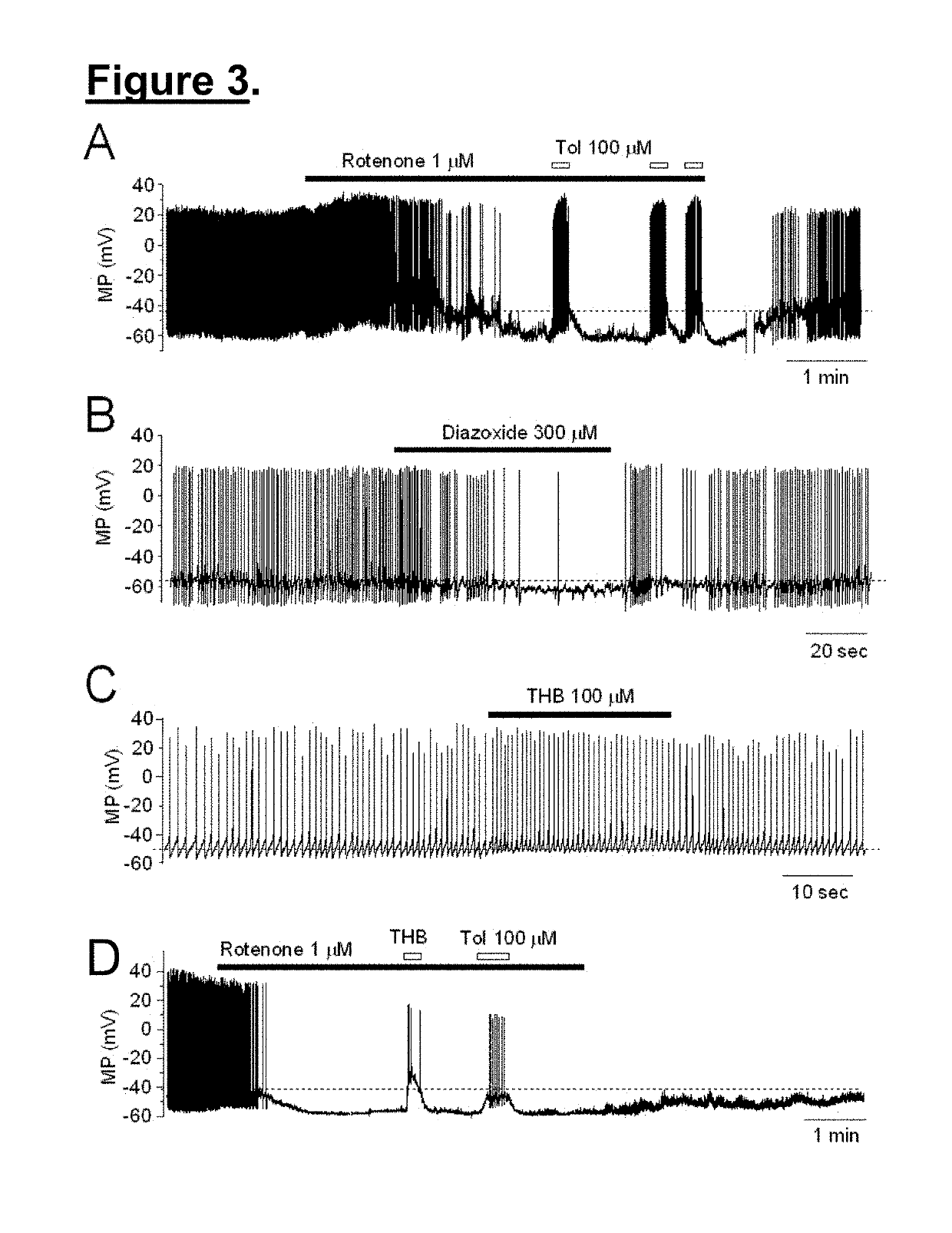Novel methods of use of tetrahydroberberine (THB)
- Summary
- Abstract
- Description
- Claims
- Application Information
AI Technical Summary
Benefits of technology
Problems solved by technology
Method used
Image
Examples
example 1
Generally
[0056]The targets and underlying mechanisms of tetrahydroberberine (THB) are largely unknown. However, the inventors believed that THB blocks KATP channels in dopaminergic (DA) neurons acutely dissociated from rat SNc. Using perforated patch-clamp recording in current-clamp mode, the functional KATP channels can be opened by persistent perfusion of an inhibitor of complex I of the mitochondrial respiratory chain, rotenone. Bath-application of THB reversibly blocks opened KATP channels in a concentration-dependent manner, which is comparable to a classical KATP channel blocker, tolbutamide.
[0057]Compared to THB analogs, l-stepholidine (l-SPD) or l-tetrahydropalmatine (l-THP), the THB's effect on the blockade of KATP channels is more profound. In addition, exposure of only THB to the recorded neuron significantly increases action potential firing, and co-exposure of THB and dopamine restores dopamine-induced membrane hyperpolarization, demonstrating that THB exhibits an excit...
example 3
Perforated Patch-Clamp Whole-Cell Recordings
[0059]Perforated patch whole-cell recording techniques were employed as previously described [28, 29, 34]. Pipettes (3-5 MΩ) used for perforated patch recording were filled with intracellular recording solution containing 140 mM potassium gluconate, 10 mM KCl, 5 mM MgCl2, and 10 mM HEPES, pH 7.2 (with Tris-OH). The amphotericin B was freshly prepared to 200-240 μg / ml from a 40 mg / ml in DMSO stock. The liquid junction potential was 14 mV calculated using Clamplex 9.2 (Axon Instruments, Foster City, Calif.) and corrections were made for junction potentials post-hoc. After tight seal (>2 GΩ) formation, it usually took about 5 -20 min to convert to perforated patch mode, and an access resistance of 20-60 MΩ was accepted to start the experiments. Series resistance was not compensated in this study. The data were filtered at 2 kHz, acquired at 10 kHz and digitized on-line (Digidata 1322 series A / D board, Axon Instruments, Foster City, Calif.). A...
example 4
Immunocytochemical Staining
[0060]Dissociated VTA neurons were fixed with 4% paraformaldehyde for 15 min, rinsed three times with PBS, and treated with Saponin (1 mg / ml) for 5 min to permeabilize the cells. After rinsing four times with phosphate-buffered saline, the neurons were incubated at room temperature in (TH) primary antibody (AB152, Chemicon International, Temecula, Calif.) diluted 1:1000 in Hank's balanced salt solution supplemented with 5% bovine serum albumin as a blocking agent for 30 min. Following another three rinses with phosphate-buffered saline, the secondary antibody (anti-mouse IgG cy3 conjugate, Sigma Chemical Co., St. Louis, Mo.) was applied at room temperature for 30 min (diluted 1:100). After rinsing a final three times with phosphate-buffered saline, the labeled cells were visualized using fluorescence microscopy.
Example 5
Chemicals and Statistics
[0061]Pronase was purchased from Calbiochem-Novabiochem Co (La Jolla, Calif., USA); rotenone, tolbutamide, and luc...
PUM
| Property | Measurement | Unit |
|---|---|---|
| Molar density | aaaaa | aaaaa |
| Molar density | aaaaa | aaaaa |
| Molar density | aaaaa | aaaaa |
Abstract
Description
Claims
Application Information
 Login to View More
Login to View More - R&D
- Intellectual Property
- Life Sciences
- Materials
- Tech Scout
- Unparalleled Data Quality
- Higher Quality Content
- 60% Fewer Hallucinations
Browse by: Latest US Patents, China's latest patents, Technical Efficacy Thesaurus, Application Domain, Technology Topic, Popular Technical Reports.
© 2025 PatSnap. All rights reserved.Legal|Privacy policy|Modern Slavery Act Transparency Statement|Sitemap|About US| Contact US: help@patsnap.com



